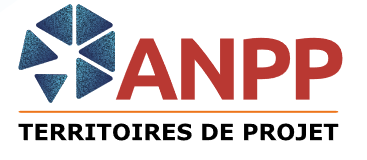ANPP: Project territories at the intersection of mobility, living and employment areas
enero 2023
Association Nationale des Pôles territoriaux et des Pays (ANPP - Territoires de projet)
Getting to grips with the issue of mobility means choosing to move away from an approach centred on modes of transport to a cross-disciplinary approach that includes issues of access to the area, employment, healthcare, services, and so on. Mobility, while dependent on infrastructure and service provision, is driven by a multitude of needs, to which the structural dimensions need to be adapted. In the same way, the obstacles are multidimensional and require socio-economic and even cultural aspects to be taken into account. In recent times, the ecological dimension of mobility has also become a central issue. What services can be offered to reduce the carbon cost of mobility in a given area? What solutions can be found for sharing uses and decompartmentalising spaces, while at the same time providing solutions to the problem of car ownership? The ecological transition is calling into question all our uses and permeating all thinking about mobility. The testimonies gathered in this survey show the way in which the local level is taking on mobility-related issues. If becoming « Mobility Organising Authorities » (AOM) enables levers to be activated that transform a territory, the coordination of AOM EPCIs by the Pays is part of the same logic. By working on a supra-communal scale, the Pays are at the interface of the inhabitants and the catchment areas. They provide a forum for dialogue with all the stakeholders involved, and pool and strengthen local engineering.
Para descargar: enquete-mobilite-1.pdf (1,9 MiB)
Additional resources for rural areas with limited engineering resources
However, it is worth remembering that, without specific funding for rural and peri-urban areas, it is difficult to envisage replicating these examples in all areas. The LOM law has many ambitions, but has made little or no provision for measures to encourage EPCIs with limited resources to develop their mobility skills. The disparate situations in different regions with regard to the assumption of responsibility for mobility illustrate the difficulties faced by a major and long-standing player in mobility, namely the region, in considering transferring responsibility to the local level. In this sense, the LOM law has set in motion a movement, but one on which many regions have found it difficult to position themselves.
ANPP recommends that mobility powers be extended to project territories and that they be fully exercised:
-
When all the EPCIs of the PETR have mobility powers, to generalise the taking of powers at supra-communal level, or coordination by the PETR, in order to pool actions at this level.
-
Carry out a mobility analysis to establish a detailed understanding of the needs and uses of the area
-
Mobilise European funds, France Mobilités and operators in the field to experiment with new service offerings. Support for regions with fewer engineering resources should enable them to access these calls for projects.
-
Work on the theme across the board with employment, housing, health, services, etc. Provide for the participation of project leaders and players in these areas in the mobility COPIL.
-
Call for the funding of local development and transition engineering, without which projects cannot get off the ground and AOMs in white mobility zones cannot develop.
-
Envisage a second part to the LOM law, which would take the situation in rural and peri-urban areas as its starting point, in order to move away from an « urban-centric » vision of mobility issues.
